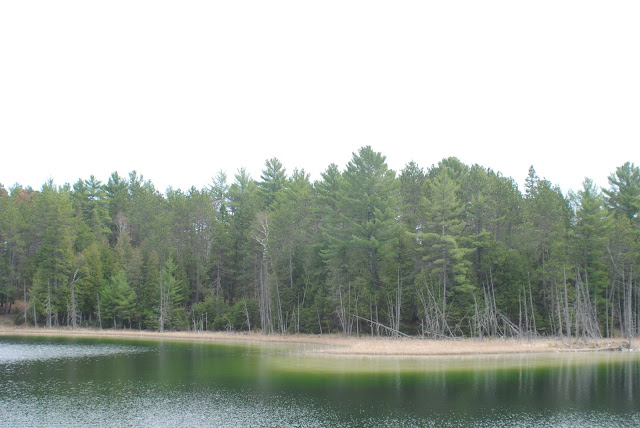So far 8 birds have formed 4 pairs and are well under way in building their nests. some of the males started nest building before they were even introduced, one male tested out 5 out of 6 of his nest cups, lining them with a few twigs and nest hair.
Our accommodation is pretty rustic, we have running water and electricity when we turn on the generator but this uses lots of fuel so we usually do our evening paperwork by head torch. I live with Hazel, the Shrike field biologist who monitors the wild shrikes, and Steph the field assistant who spends 2 days a week helping me with the captive shrikes and the remainder of the week monitoring the wild birds also. We are looking forward to some quiet evenings around the camp fire.
On my days off I visited Bridget at David's parents cottage near Lakefield. It's beautiful up here and wildlife is never far away. David took me out on a boat trip around Deer Bay where we saw two osprey fighting off two bald eagles that got too close too their nest. Unfortunately I didn't have my camera with me!
Today we visited Petroglyphs National Park , within seconds of leaving the car we came across this prehistoric fellow.
Snapping turtle Chelydra serpantina
A few minutes later we had to rein in the dogs again as a pocupine shuffled around in the bushes. My arms were full with small dogs so I couldn't grab my camera!
Next up we almost jumped out of our skin when we saw this beaut!
Eastern hog-nosed snake (Heterodon platirhinos)
When threatened, the Eastern hog-nosed snake behaves like a cobra by flattening it's head, rearing up and hissing but is actually non-venomous.
Northern ribbon snake (Thamnophis sauritus septentrionalis)
We stopped off at a small lake to let the dogs have a swim and to feed Oliver.
And finally, the view from the cottage, it's been nice to hear the call of the loons at night again.










